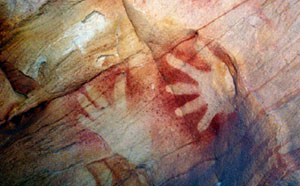Bold buccaneers, king tides and ancient mysteries
The Buccaneer Archipelago is a stunningly rugged area off the Kimberley coast in Western Australia, consisting of some 1000 islands. The scenery is spectacular with secluded white sandy beaches, patches of rain forest, mangrove estuaries, plunging cliffs, indigenous rock art and hidden reefs that litter offshore waters.
Situated approximately 2800 kilometres north of Perth, its distant location has meant it has remained an unspoilt and remarkably pristine location to explore and experience.
Named by Phillip Parker King in 1820 in memory of William Dampier, a supposed buccaneer and early de-facto explorer who visited the sound in early 1688, the region is known to have been visited by early Dutch mariners who strayed south whilst travelling to Batavia (Jakarta) in present-day Indonesia. One, Dirk Hartog, is generally believed to be the first European to sight the land in 1616 - hence the title of New Holland that persisted until the early 19th Century.
Among the more outlandish additions to this intriguing history, researcher and author Jonathan Gray, believes the wreck of a Phoenician ship lies around the entrance to King Sound, a relic of a time, he claims, when these ancient mariners plied Australian waters exploiting our mineral resources, trading and even intermarrying with the Aboriginals.
Here too, tides of up to 11 metres are among some of the biggest in the world, and certainly the largest in Australia. In some places they are treacherously strong and unpredictable, surging up rivers and ripping through inland passages.
These tides create such phenomena as the horizontal waterfall in Talbot Bay. Here the tide rushes through the gaps in the cliff which are only a few metres wide forming the effect of a horizontal waterfall. At the peak of the tidal inflow or outflow the difference in levels is some four metres, which creates an astounding picture.
The warm weather, water and remoteness of the archipelago have created an incredible breeding ground for a huge array of wildlife including crocodiles, snakes, birds, bats and most importantly fish. Visitors to the Buccaneer Archipelago find the fishing here exceptional and many species inhabit the region in abundance. Your catch could include Barramundi, Coral Trout, Red Emperor, Trevally, Snapper, Tuna and Spanish Mackerel, as well as oysters and enormous mud crabs.
Aboriginal people have lived in the Archipelago for tens of thousands of years and their rock art can be found on many islands and the adjacent mainland. Using rafts of mangrove logs and canoes, tribes travelled between the islands. Indigenous groups today still visit their traditional sites and communities are established in the area.
Exploring this area with a Coral Princess ‘sea safari’ in the brand new, 76-passenger Oceanic Princess is an unique adventure experience. A scenic flight of this astounding region is an option and affords a truly breathtaking view of this most spectacular landscape.

